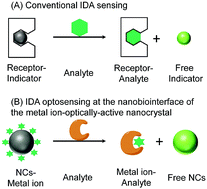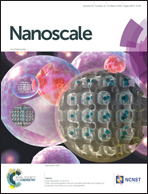Optical sensing at the nanobiointerface of metal ion–optically-active nanocrystals
Abstract
Optically-active nanocrystals (such as quantum dots and plasmonic noble metal nanoparticles) have received great attention due to their size-tunable optical properties. The indicator displacement assay (IDA) with optically-active nanocrystals has become a common practice for optical sensor development, since no sophisticated surface functionalization of nanoparticles is required. Among the IDA-based optical sensors, the use of metal ions as receptors seems to be attractive. Therefore, in this review, the research progress of optical sensing at the nanobiointerface of metal ion–optically-active nanocrystals has been summarized. In particular, metal ion-mediated selective recognition has been summarized here based on the classical Hard–Soft-Acid–Base (HSAB) principle, which has been seldom mentioned before. Most of the references were therefore categorized according to their located place based on the HSAB theory. Besides, several metal ion modulation strategies that were not related to the HSAB theory (e.g., redox modulation) were also included. Finally, due to the cross-talk of metal ions in selective recognition, we have also summarized sensor array development based on multiple metal ion receptors in IDA sensing with optically-active nanocrystals. Several interesting applications of the IDA sensing with metal ions as receptors and optically-active nanocrystals as indicators are presented, with specific emphasis on the design principles and photophysical mechanisms of these probes.

- This article is part of the themed collection: Recent Review Articles


 Please wait while we load your content...
Please wait while we load your content...